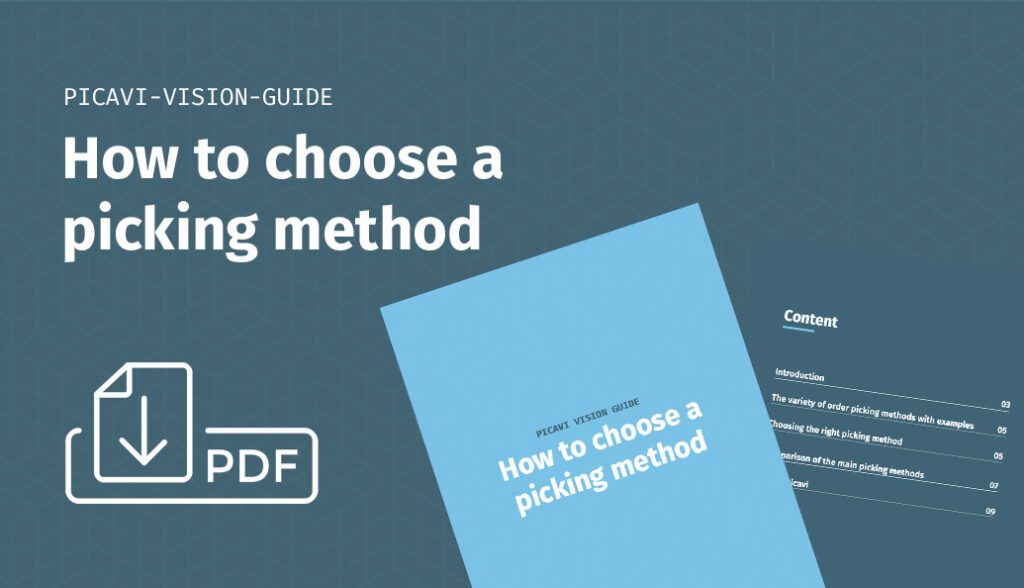Pick-by-Light: applications, functions, and alternatives
There are various solutions for paperless picking. One of the most popular methods is pick-by-light, in which the employee receives his instructions via visual light signals at the respective storage locations. The method is most suitable for warehouses with a large quantity of items and a high turnover. We will show you how pick-by-light works, look at advantages and disadvantages as well as possible alternatives.
Pick-by-Light in logistics
The basis for pick-by-light are displays and buttons attached to the individual shelves in the warehouse. When the picking-process is started, corresponding signals light up. The worker then uses this to navigate and confirms the pick with the press of a button on the compartment display. The system sends a confirmation to the backend-software (for example, a warehouse management system or an ERP system such as SAP). Pick-by-light works with either a parallel or serial setup: In parallel mode, all order-relevant light signals light up from the start. In a serial operation they only activate after confirmation of the previous step in the process.
Advantages of Pick-by-Light
Picking with pick-by-light works paperless: Hand-held paper lists are no longer necessary and warehouse employees can work hands free. This relieves both physical and cognitive strain, improving concentration and picking quality. The simple workflow not only helps picking performance in the warehouse, but also simplifies the training process for new employees. Pick-by-light is particularly suitable for companies with small shipping items and fast turnaround due to the low average order processing time.
Disadvanatages of Pick-by-Light
The biggest disadvantage of pick-by-light is the necessary investment: it involves high implementation costs and associated technical efforts – every shelf in the warehouse must be equipped with a compartment display. This process requires a lot of time, which companies usually do not have, as warehouse operations are limited extent during implementation. Another problem arises once a compartment display fails: Ideally, the picker recognizes the defect and then documents the picking process for this item manually. If the failure remains undetected, however, picking errors occur. To avoid this, the maintenance effort for the hardware is extremely high. In addition, pick-by-light is the least flexible picking method: Adjustments to the warehouse structure can usually happen after further investments.
Alternatives to Pick-by-Light

Pick-by-Paper
Pick-by-Paper is by far the most complicated picking method. High picking speeds are difficult to manage with a paper list that needs to be carried around. In addition, there are countless breaks in the workflow, a negative carbon footprint and the need for manual system corrections.
Pick-by-Scan
This form of picking also restricts warehouse personnel during picking operations: Mobile scanners are required for order confirmation, which must be continuously carried and actively operated.
Pick-by-Voice
Pick-by-Vision as an alternative to pick-by-light
With Pick-by-Vision, companies establish a solid footing in terms of productivity, ergonomics and picking quality. The method combines all the advantages of the other picking solutions by visually guiding warehouse personnel through the order via the user interface of the smart glasses.
Pick-by-vision is based on the fact that people take in 80 percent of all information through the eyes. Therefore, the system displays all important data on the screen of the smart glasses. Thanks to assisted reality, the warehouse environment is ideally complemented for the picker by the information projected on the interface. Just like Pick-by-Light, Pick-by-Vision also works paperless and hands free. Simultaneously, all processes can be voice-controlled using the integrated microphones of the smart glasses. This significantly speeds up data input such as quantity corrections or fault reports. To ensure accuracy, the user must confirm the entered command on the display of the smart glasses to avoid mistakes.
